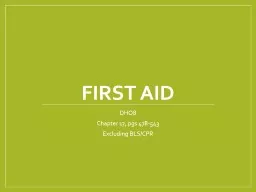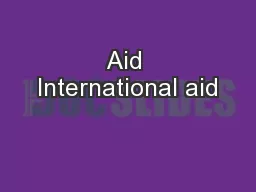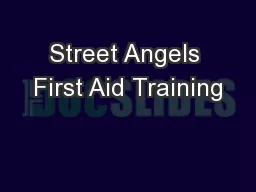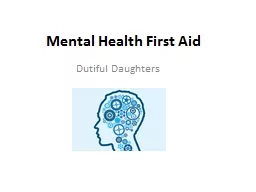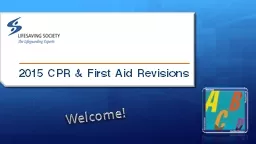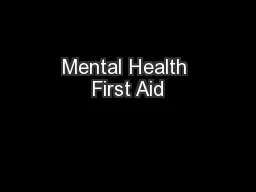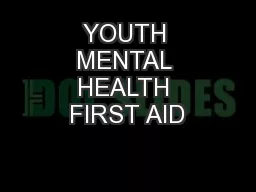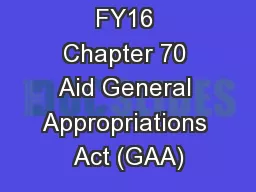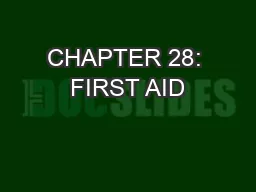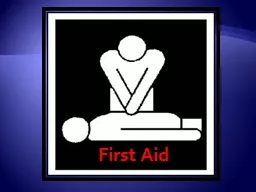PPT-First Aid DHO8 Chapter 17,
Author : stefany-barnette | Published Date : 2019-12-24
First Aid DHO8 Chapter 17 pgs 478543 Excluding BLSCPR Unit Objectives Demonstrate the necessary skills to provide first aid treatment Describe the basic principles
Presentation Embed Code
Download Presentation
Download Presentation The PPT/PDF document "First Aid DHO8 Chapter 17," is the property of its rightful owner. Permission is granted to download and print the materials on this website for personal, non-commercial use only, and to display it on your personal computer provided you do not modify the materials and that you retain all copyright notices contained in the materials. By downloading content from our website, you accept the terms of this agreement.
First Aid DHO8 Chapter 17,: Transcript
Download Rules Of Document
"First Aid DHO8 Chapter 17,"The content belongs to its owner. You may download and print it for personal use, without modification, and keep all copyright notices. By downloading, you agree to these terms.
Related Documents

